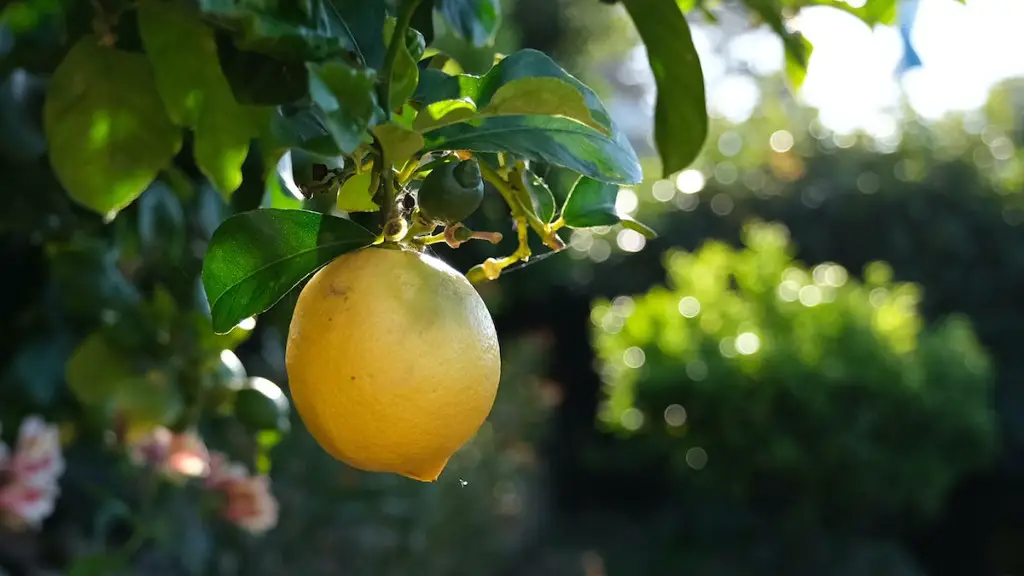When it comes to picking apples off trees, timing is essential for getting the most of the harvest. Autumn, particularly between September and October, is generally the best time to pick apples. The mild and sunny conditions in this period helps the apples to ripen and when they are ripe, they should be ready to be harvested. Apples should be harvested one by one, taking care not to damage the remaining fruits on the tree. It’s best to pick apples with stems intact, as this helps to extend the apple’s shelf life by several weeks. Once picked, the apples need to be stored properly. They should be kept in a cool, dark area, such as a cellar or refrigerator.
Apple Varieties
Not all apples are ready to be picked at the same time. Different varieties ripen at different times. In general, tart apple varieties tend to ripen earlier in the season, while sweet apple varieties tend to ripen later in the season. Different types of apples have different uses. Sweet apples are good for eating out of hand, while tart apples work well in baking and cooking. Depending on what the apples are to be used for, it’s important to pick the right variety of apples for the job.
Weather Conditions
Weather conditions also affect when apples can be picked. If there is a harsh winter or spring, this can delay the apple harvest. Similarly, if the summer is cool, this can delay the ripening process. Generally, the apples should be harvested when they are firm and mostly red. If the apples are picked too early, they won’t be ripe and could be sour. If the apples are picked too late, they could be overly ripe and may not store well.
The Appearance of the Apples
As an indicator of when to pick apples, the appearance of the apples can be useful. Different apple varieties have different colors and sizes. When the apples are ready to be picked, the colors of the apples should be bright and the apples should be a uniform size. If possible, it’s also a good idea to check the inside of the apples for ripeness. If the apples are firm and have a creamy texture, this indicates that they are ripe and ready for picking.
Considerations
There are a few other factors to consider when picking apples from a tree. For instance, the apples should be inspected for any signs of damage or disease. Any damaged apples should be removed to prevent the spread of disease. It’s also important to pick apples from the bottom of the tree first. This ensures that the fruits get the most sunlight and ripen fully before they are harvested.
Organic Apples
When picking organic apples, it’s important to choose using the same criteria mentioned above. Certified organic apples should be harvested when they are ripe and firm, and no signs of damage or disease should be present. Organic apples should also be stored separately from conventional apples to prevent cross contamination. Organic apples should also be labeled accordingly so that consumers know what type of apples they have bought.
Harvesting Tools
When it comes to picking apples from a tree, there are several tools that can be used to make the job easier. A long ladder and a long-handled apple picker can be used to access the higher branches. A bag can be used to store the apples and a basket can used to transport them. Care should be taken when harvesting apples to prevent any damage to the tree. The apples should be gently removed and the tools should never be used to damage the tree’s branches or trunks.
Storage and Preservation
Once the apples have been harvested, it’s important to store them properly for later use. Apples should be stored in a cool dark place, such as a refrigerator or cellar. Apples should be stored in an area with good ventilation so that the apples do not become too moist. Apples can also be frozen for long term storage. Before freezing, the apples should be washed and blanched. They should also be peeled, cored and sliced. Apples can also be preserved by canning, drying and juicing.
Uses for Picked Apples
Picked apples can be used in a variety of dishes and recipes. Apples can be eaten out of hand, made into pies, cakes, jams, sauces and other desserts. Apples can also be cooked into savory dishes, like casseroles and stews. For an extra special treat, apples can be candied or fried. Apples can also be used to make apple juice, cider and wine. Applesauce is another classic use for picked apples, as are applesauce cakes and muffins.
Health Benefits of Picked Apples
Picking apples from trees has numerous health benefits. Apples contain plenty of vitamins, minerals and antioxidants, which are all beneficial for overall health. Apples are also a good source of fiber, which helps to support digestion and can help to reduce cholesterol levels. Eating apples can also help to boost the immune system and protect against disease. Apples are also low in calories and are a great snack for those trying to lose weight.
Harvesting Tips
When harvesting apples, it’s important to take a few steps to ensure a successful harvest. Start by picking the apples on the lowest branches first, and try to avoid damaging the fruit. Make sure to pick apples of even size and with the stem intact, as this will help to prolong their shelf life. Store the apples in a cool, dark area, such as a refrigerator or cellar. Lastly, label the apples so that it’s easy to identify them when needed.


